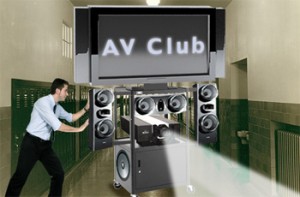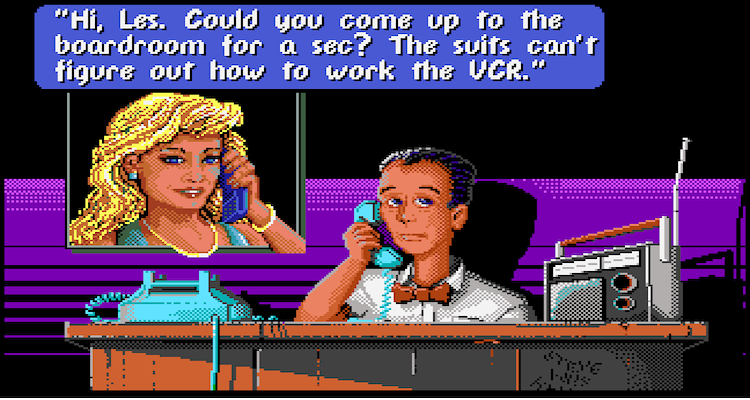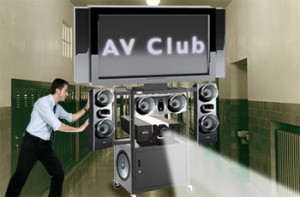AV Project Overachievers
I n a perfect AV world, a consistent work effort put into a project would net a consistently (and proportionate) successful outcome. Unfortunately, beyond what can be attributed to Murphy, some projects seem to be resource drains until they finally make it to completion. But with this being a new year and all, lets not focus on those. Rather, this month’s focus of the AV Club body of knowledge will be on some real world tidbits that, given an AV Pro’s other technical expertise, can push beyond “whew, finally done” to “and take that.” Before kicking off this dialog on such extras that contribute to end of project bonus(es), here are a few backdrop comments on the assumed AV Pro’s tech experience. Suffice to say that none of these “extras” should be considered in place of the requisite applied technical skill required of the responsible parties. Rather, they are in addition to possessing and applying them. A gross example: If one project goal is to provide a new primary display for a classroom and the solution includes a slick-looking (but small for the room) flat screen display, when all is said and done, students in the back of the room complain (which is a major red flag as they rarely speak up on such things) they can’t read the typical text content. No amount of “spin” of following extras will right that wrong.
n a perfect AV world, a consistent work effort put into a project would net a consistently (and proportionate) successful outcome. Unfortunately, beyond what can be attributed to Murphy, some projects seem to be resource drains until they finally make it to completion. But with this being a new year and all, lets not focus on those. Rather, this month’s focus of the AV Club body of knowledge will be on some real world tidbits that, given an AV Pro’s other technical expertise, can push beyond “whew, finally done” to “and take that.” Before kicking off this dialog on such extras that contribute to end of project bonus(es), here are a few backdrop comments on the assumed AV Pro’s tech experience. Suffice to say that none of these “extras” should be considered in place of the requisite applied technical skill required of the responsible parties. Rather, they are in addition to possessing and applying them. A gross example: If one project goal is to provide a new primary display for a classroom and the solution includes a slick-looking (but small for the room) flat screen display, when all is said and done, students in the back of the room complain (which is a major red flag as they rarely speak up on such things) they can’t read the typical text content. No amount of “spin” of following extras will right that wrong.
OK, so aside from first addressing the right technology solutions, what are some elements that can contribute to pushing an AV project into high achievement?
Sliding Achievement Scale. The best AV project plan (typically articulated by the AV program document) includes some variability in its goals. This does not mean ambiguous goals so as to stack the deck for loose interpretation of ultimate success; rather, it’s acknowledgement that technology is always evolving and we want to maximize the return to the customer in terms of latest and greatest features. What is especially important here is to make sure that the new model upgrade offered “just in time” has all the original criteria needed… and at least one feature of those that were on a previous wish list. Then, make sure the end users are aware those wish list features were ultimately provided (at no additional cost, thank you!).
Know Thy AV User. Despite its politically incorrect connotation, profiling the real end user base can be helpful. And as any happy customer ultimately means, to some degree, cast the final product in his own image, it’s important to understand how (or equally, how not) his view of things colors the likelihood of successful application of what might be an otherwise atypical solution in his environment. The dicey part of “build it and they will come,” like the movie Field of Dreams, is that one could be literally alone (at least initially) in appreciating the final outcome. So listen, and probe, intently to what is initially described as the real end users’ goals for the AV system (and/or the space itself). These conversations can become slightly uncomfortable when they occur upfront. But that all fades away when the same folks are seeking you out afterwards for the next project due to your thoroughness.
Timing is everything. A great final project that is not ready for its first substantial use is going to be a hard sell. And, while perhaps a hallmark of great AV project management is making good decisions in time-critical situations, it’s also true that almost all those decisions would be better made with a broader set of choices available when not under the sound of a ticking clock. So, don’t assume “work by others” will be done as initially indicated and do assume you’ll be expected to deliver on contingency plans. The theme here is to err on the side of being a pest to get critical tasks completed in time windows that allows for good decisions. This way the project vortex toward bad ones won’t suck you (and your final product) down, but have you delivering solutions to an otherwise weary end user.
 Shouldn’t every AV project have the opportunity to be viewed in the end as being an overachiever? The obvious answer is yes, but getting there isn’t as easy as just applying best AV practice. While our techie dreams have us wowing roomfuls of end users with the latest AV equivalent Red Ryder gadget, reality is what it takes to get that extra attention has more to do with the extras that matter to them.
Shouldn’t every AV project have the opportunity to be viewed in the end as being an overachiever? The obvious answer is yes, but getting there isn’t as easy as just applying best AV practice. While our techie dreams have us wowing roomfuls of end users with the latest AV equivalent Red Ryder gadget, reality is what it takes to get that extra attention has more to do with the extras that matter to them.
The views expressed in this column do not necessarily reflect the views of the authors’ employer(s), past or present.
Greg Bronson, CTS-D, applies AV technologies in the development of innovative learning spaces for higher education. Greg spent the first 10 years of his career as AV technician and service manager, with the past 12+ years as an AV system designer and project manager. Bronson currently works for Cornell University and has also worked for two SUNY (State University of New York) campuses as well as a regional secondary education service depot. Bronson is the originator of concept for InfoComm’s Dashboard for Controls and has had completed projects featured in industry publications. You can reach Greg at gregthetechie@netscape.net





